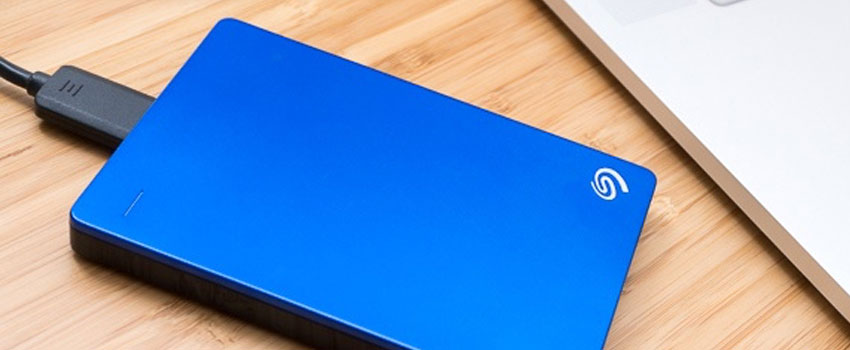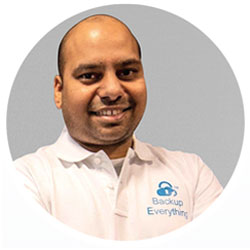Time to Secure your Valuable Data
Data presents itself as the most important resource of the modern digital era. The importance of the data has been brought on growth and innovation within digital devices. Most data can be quantified because of it being digital, which explains its significance. Because of this newly profound value, it’s important to keep the data secure.
Several unwanted events can damage the source of where the user is storing the data. The source can be any digital device. Keeping this data secure means keeping a backup plan for your important data. Many backup plans exist that you can choose based on your requirements. Your requirements can be to understand where the data getting backed up is really secure. In this whitepaper, we will explain different approaches you can adopt to securely back up your data present in external hard drives.
FREE TRIAL FOR 30 DAYS – TRY IT NOW
Understanding Backup Plans for your External Hard Drive
External Hard Drive – Backup plans can be resourceful in helping preserve your valuable data. Since most information today is kept on digital devices, it can be vulnerable to unwanted events. These unwanted events can result in damage to your hard drive, software corruption or even theft. It’s almost impossible to list down all of the scenarios that can result in a possible loss of data.
Backup plans thus help prepare for data loss by giving you the ability to keep a copy. A number of backup options exist today to help facilitate users. All of these options differ in how they work. It’s important to know the number of options that exist, to know which one suits your purpose.
Users can first start by understanding what they need and then choose from the number of backup options that exist. This means understanding the pros and cons of each choice. The backup options depend on the source of data storage, which in this case is an external hard drive.
External hard drives do not come attached to your computer. They help keep data secure in a separate storage unit not attached to your computer. It can be categorized as a form of local backup. However, it can also be vulnerable to damage.
External hard drives are sensitive physical storage systems. This is why any external force or fall can cause damage and a permanent loss of data. This is why it’s important to keep the data also stored on a separate backup method. This implies the direct use of the 3-2-1 rule of backup. This rule states that at least 3 copies of your valuable data should be kept at all times. Two out of these three copies should be on separate storage systems, while at least 1 should be kept off-site. Here, we’ll look at many destinations to where data from the external hard drive can be copied.
Backup Options
A number of options are available to the average user for backup. Users today are even presented with backup software that can automate the process. Let’s look at the many alternatives present, along with weighing the pros and cons of each.
1.Backing up to another External Hard Drive
External hard drives exist primarily as a source of backing up valuable data. It’s also probable that your external hard drive also contains data that was backed up from your computer or mobile device. As a backup option, external hard drives can be very convenient.
External hard drives help keep data close at hand. Serving as a local backup, users can access data from it at any time. It’s also convenient in storing selective data and saving storage space in the process. This is why backing up data from an external hard drive to another external hard drive can be very resourceful.
Users can either manually backup data to another external hard drive or can choose a backup software. While the manual route is time consuming and takes extra effort, the software route is extremely efficient.
Manual Backup Process
- Start by plugging-in both external hard drives to your computer.
- Both the source and destination drive will show up on the operating system.
- Choose the files you wish to back up from the source drive.
- Start copying the files to the destination hard drive.
Automated Backup Process
The automated process involves using backup software to handle the process for you. In this scenario, users can opt for AOMEI Backupper. An open-source application, it can sync all of the contents of one external hard drive to another. The software is capable of taking full, incremental and differential backups of your files and folders.
2.Backing up to another External Hard Drive
The process of copying all of the contents from an external hard drive to a computer can even be general in nature. This means that users might not be backing up data, rather it could also be a process of transferring data to a computer.
Whatever the reason, importing data from an external hard drive to a computer is a simple process. Users can either backup data manually, or through the use of professional software.
Manual Backup Process
- Connect both the source and destination drive to your computer.
- Open the AOMEI Backupper software and find the ‘Backup’ tab at the left side of the home screen.
- After choosing ‘Backup’, select ‘File Backup’.
- Choose the data you wish to upload by selecting the ‘Add File’ or ‘Add Folder’ option.
- Choose the external hard drive where you wish to back up the data.
- Once the data is chosen, click on ‘Start Backup’.
- The drives connected will now backup from the source to the destination.
- For manual backups, start by plugging the external hard drive into your computer system.
- Once plugged in, your computer OS will give you an option to copy the contents using the built-in software. In case of operating systems such as Windows, the File Explorer handles the backup.
- The manual process is a simple drag and drop procedure but can be very time consuming.
- Choose the data you wish to upload by selecting the ‘Add File’ or ‘Add Folder’ option.
- Choose the external hard drive where you wish to back up the data.
- Once the data is chosen, click on ‘Start Backup’.
- The drives connected will now backup from the source to the destination.
- Once the software is open, start by locating the ‘Backup’ tab and clicking it.
- Once selected, choose the ‘Disk Backup’ option.
- Now to select the external hard drive as the source, click ‘Step 1’.
- Select ‘Add’ when the prompted at the pop-up window.
- Now, click on ‘Step 2’ to choose the destination path.
- Here, you can select the computer hard drive as the destination path. You can even choose other available options such as cloud backup or another external hard drive.
- The next window will ask you for any further configurations. Here, you can choose between selecting multiple disks, schedule backup, and other options as well.
- Finally, click ‘Start Backup’ to start the backup process.
3.Backing up to the Cloud
Cloud computing presents itself as a lucrative opportunity to capitalize on data management. The system exists on the internet and presents a virtual space to manage data. Usually, cloud computing services exist to provide users this facility, where the entire system is managed by the vendor.
On the backend, physical data centers help keep this virtual space running. These data centers consist of servers which provide users a space to store data. On the frontend, users save resources in maintaining a physical system to store their data. Services that provide users with the ability to store data are known as cloud storage services.
In a cloud storage service, users are presented with a certain amount of space for an online backup. Here, users upload data from their digital device on to the cloud. This helps provide an opportunity to manage your data offsite, without fear of data loss.
Cloud storage removes the fear of your data being lost by any physical damage. It also has a number of added factors for backup, such as users can access this data from any digital device. It also saves costs spent on maintaining a physical system. These added advantages make cloud storage the best option for your backups.
To backup data from your external hard drive to the cloud, a computer will provide the easiest option. This is because an external hard drive cannot transfer the data to the cloud itself. It must first be transferred to a computer and then moved to the cloud. However, once this data is on the cloud, users do not need to worry about data loss.
Cloud storage services such as Google Drive, Dropbox and OneDrive are key examples of popular options available. Cloud storage services usually provide limited storage space and manual uploading of data. For users who wish to backup large amounts of data and with an automated process, should go for cloud backup services.
Unlike cloud storage, cloud backup services are dedicated to backups. This means the service centers meet all forms of backup needs. As such, most services provide unlimited storage space. For users with multiple external hard drives, cloud backup services such as Backup Everything, Amazon Web Services or Microsoft Azure can help.
Out of all the alternatives present, backing up data from an external hard drive to cloud is the best option available. This is because the chances of losing your backup files are extremely low. Also, users can access the backed-up data from any digital device.
4.Other Methods
While the methods presented above might serve as primary use cases, others still exist. Such as, users can even choose between Network Attached Storage (NAS) or an external USB flash drive. A number of disadvantages are presented within these options, but some user requirements might even make them a good alternative.
Take the use of USB flash drives first. It’s important to know that USB flash drives and external hard drives serve the same purpose. USB drives are small, compact and easy to carry. However, they have a smaller and much more limited amount of storage space present. External hard drives are larger but provide more space for storage. Both act as a secondary storage device.
The limited storage space of USB drives might be an issue for users who wish to backup large amounts of data. However, if the files you wish to backup are selective and need small storage space, USB drives can help. They would cost less and provide more portability.
In contrast, users can even opt for Network Attached Storage (NAS). Connected via Ethernet, the user is provided the ability to share data without an internet connection. The data stored here can be accessed by multiple people. Backing up data from an external hard drive to this network can remove the need for storage space. However, the high cost and complex installation might be an issue. Chances of data loss would be low, and users can manage their data offsite.
Vulnerability of Physical Storage
Physical storage systems will always be at risk of damage. External hard drives are especially sensitive to any external forces. This is why it’s important to keep your important files backed up.
Especially for businesses, losing data is not an option. For a small business, data loss can even cause irreversible damage. This is why it is important to have a contingency plan present. As such, relying on physical storage systems does not seem reliable.
In the end, your backup plan will matter the most. The different backup options presented here provide a viable space for backups. Given the vulnerable nature of physical storage, cloud services seem the best option available due to its efficient data security and cost-effectiveness.



